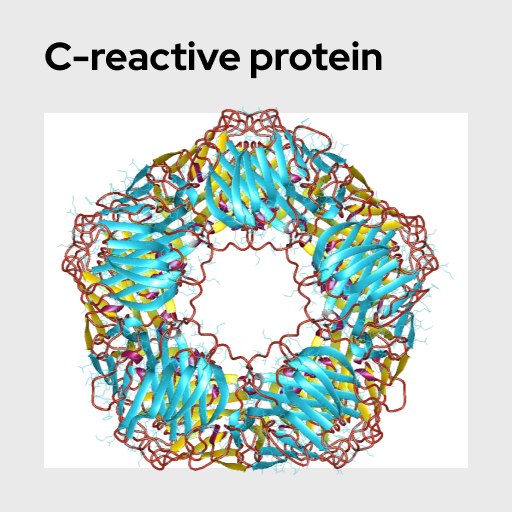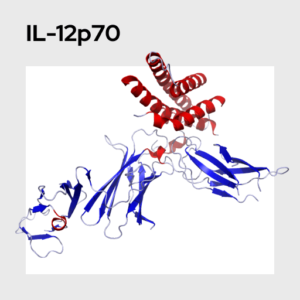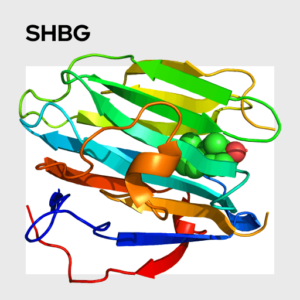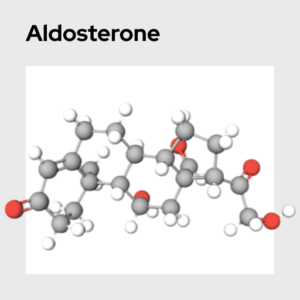C-reactive protein (CRP)
C-Reactive Protein (CRP) is an acute phase protein produced by the liver that can serve as a nonspecific index of bodily inflammatory activity. Note that CRP is less likely than proinflammatory cytokines to directly influence neural activity. Accordingly, it should not be used to test mechanistic relationships between inflammation and specific psychological outcomes. Because it is a nonspecific measure, CRP is generally used as an index of chronic (rather than acute) inflammatory activity. However, research suggests that that CRP levels may also increase in response to acute immunological stressors.
Name: C-Reactive Protein (CRP)
Category: Health & Inflammation
Type of test: Blood + Saliva
C-reactive protein (CRP) is a ring-shaped acute phase protein found primarily within circulating blood, with serum / plasma concentrations being most significantly elevated during times of acute infection. Elevated levels of CRP provide a reference point for chronic inflammatory activity, serve a risk factor for development of cardiovascular disease, and may indicate the presence of an ongoing infection. Two separate isoforms of CRP have been identified that each have distinct biological activity. The first is the natively produced pentameric form (nCRP) while the second is present after irreversible dissociation into its monomeric subunits (mCRP); this dissociation occurs at sites of acute inflammation. While these two isoforms have differential effects at sites of infection, CRP is, as a whole, considered pro-inflammatory. It is worth nothing that most standard assays measure these isoforms together and thus do not differentiate between the two.
While CRP is primarily synthesized by liver hepatocytes before being released into circulation, it is also produced in smooth muscle cells, endothelial cells, adipocytes, and certain immune cells (i.e., macrophages and lymphocytes). Its synthesis is often triggered by the release of IL-6; some evidence exists that IL-1 and other cytokines also increase the rate of synthesis when IL-6 is present. Given that the production of CRP is preceded by cytokine-induced inflammatory cascades, levels of this protein can serve as a nonspecific index of bodily inflammatory activity. Studies supporting the utility of quantifying CRP levels for this purpose find that CRP is elevated not only in the context of inflammation, but also acute and chronic stress, and even cancer.
It is important to note that because CRP is less likely than proinflammatory cytokines to directly influence neural activity (i.e., based on our current understanding), it is likely not useful for testing mechanistic relationships between inflammation and specific psychological outcomes. While CRP can be quantified in both saliva and serum / plasma, the extent to which levels in these different sample types correlate is uncertain.
Sproston, N. R., & Ashworth, J. J. (2018). Role of C-Reactive Protein at Sites of Inflammation and Infection. Frontiers in immunology, 9, e754. https://doi.org/10.3389/fimmu.2018.00754 link
van Zanten, J. V., Ring, C., Carroll, D., & Kitas, G. D. (2005). Increased C reactive protein in response to acute stress in patients with rheumatoid arthritis. Annals of the Rheumatic Diseases, 64, 1299-1304. https://pubmed.ncbi.nlm.nih.gov/15708880/






